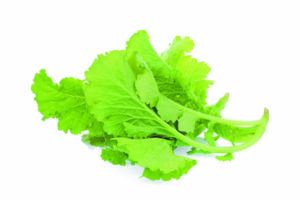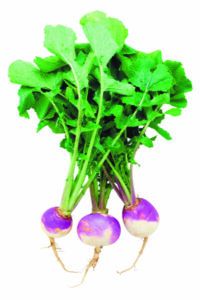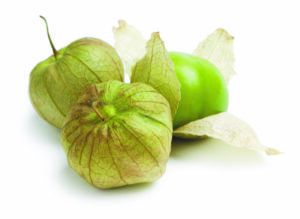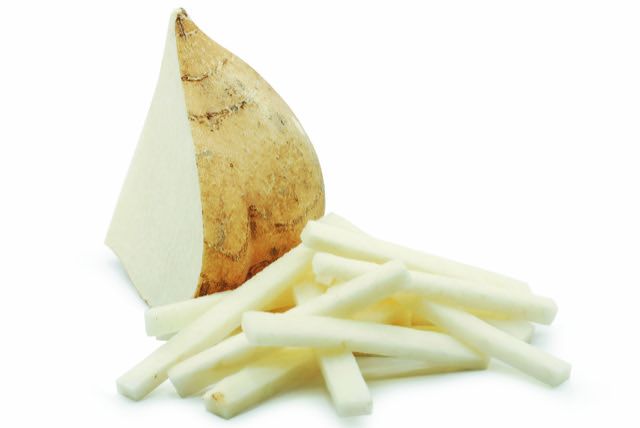Research is clear that eating more whole and minimally processed vegetables is good for your health! A great way to expand your veggie intake is to try something new.
Many food markets carry intriguing options from around the world. Here are a few to consider. Like most vegetables, these are low in calories and sodium, have no added sugar, are rich in dietary fiber, and contain a whole host of vitamins, minerals, and phytochemicals.
Jicama. Native to Central America, jicama (HIK-ka-ma) has thick brown skin and crisp, white flesh. Like a potato, jicama is a tuber, growing underground from the roots of a plant. In appearance, it looks a bit like a potato but in texture it is more like an apple and its mild, lightly sweet taste has been compared to that of a water chestnut.
Look for smaller tubers that have not been kept in the misted area of the produce section. Crunchy, juicy, and vaguely sweet, Jicama is typically eaten raw alone, with dip, or in a salad. Just make sure to peel it before eating. It can also be steamed, boiled, sauteed, or fried.

Mustard Greens. Native to India and long cultivated in China, mustard greens have the same peppery flavor as the condiment (they also come from the same plant, although typically different varieties). The flavor becomes more pungent and spicier as the leaves age and is milder when they are cooked.
Look for fresh-looking stems and bright green leaves without yellowed areas. The leaves and stems can be eaten raw or cooked. Add some to salads or use them as a side vegetable instead of spinach or other leafy greens. If you’re a fan of mustard on a sandwich, try adding these greens instead.

Turnips. Another member of the Brassica family, turnips are a root vegetable grown around the world for their leaves and roots. Turnip greens are similar in flavor to mustard greens. The skin on the bulbous roots is mostly white with purple near the top, and the crunchy flesh is white.
Turnip roots are typically roasted but can be peeled and eaten raw. With both the leaves and the roots, the peppery flavor mellows when the vegetable is cooked. Smaller turnips tend to be sweetest. Young turnips are sweeter than older roots, which can be bitter Look for heavy turnips without soft spots.
Try using turnip roots as a substitute for white potatoes in recipes, or roast, boil, steam, or shred and add to coleslaw and other salads.

Tomatillos. Technically the fruit of a plant native to Mexico, tomatillos (toe-ma-TEE-yos) look like small green tomatoes wrapped in a papery husk. (They turn purplish or yellow when they are ripe but are usually picked when they are still green.) They are less sweet and watery than tomatoes, with a somewhat more acidic, citrusy flavor.
➧ Try Something New. Look around your produce section for something you haven’t tried before. (The internet is very helpful for cooking tips and recipes.) ➧ Branch Out Slowly. If you’re hesitant to explore new tastes, start with veggies similar to familiar favorites. ➧ Use Mixed Dishes. Adding a little of a new veggie to a soup, casserole, or other mixed dish may be a less overwhelming way to introduce a new flavor. ➧ Try, Try Again. Our tastes change as we age. Occasionally revisit vegetables you think you don’t like, perhaps trying new cooking techniques (like roasting or steaming) to provide a new flavor or texture.
can also be roasted, grilled, sauteed, or used to make preserves. Remove the husk and rinse off the sticky film on the surface before using.
“If you’re concerned about novel flavors, try new veggies similar to familiar favorites,” says Kelly Kane, MS, RD, CNSC, assistant professor at the Friedman School and dietetic internship director at Tufts Medical Center. “Celery root tastes similar to celery, for example, and broccolini has a milder broccoli flavor. It can be helpful to try a new vegetable in a mixed dish, like a soup or casserole. The new taste will not be overwhelming if it is combined with flavors you know you like.”
In addition to trying new veggies, consider revisiting some you normally avoid. “I recommend re-trying vegetables you think you don’t like,” Kane says. “Our tastes change as we age, so that opinion you formed as a child might not hold true now. Or perhaps you just didn’t like the way they were cooked. Trying a different cooking technique (like steaming or roasting instead of boiling) could make all the difference.”
























